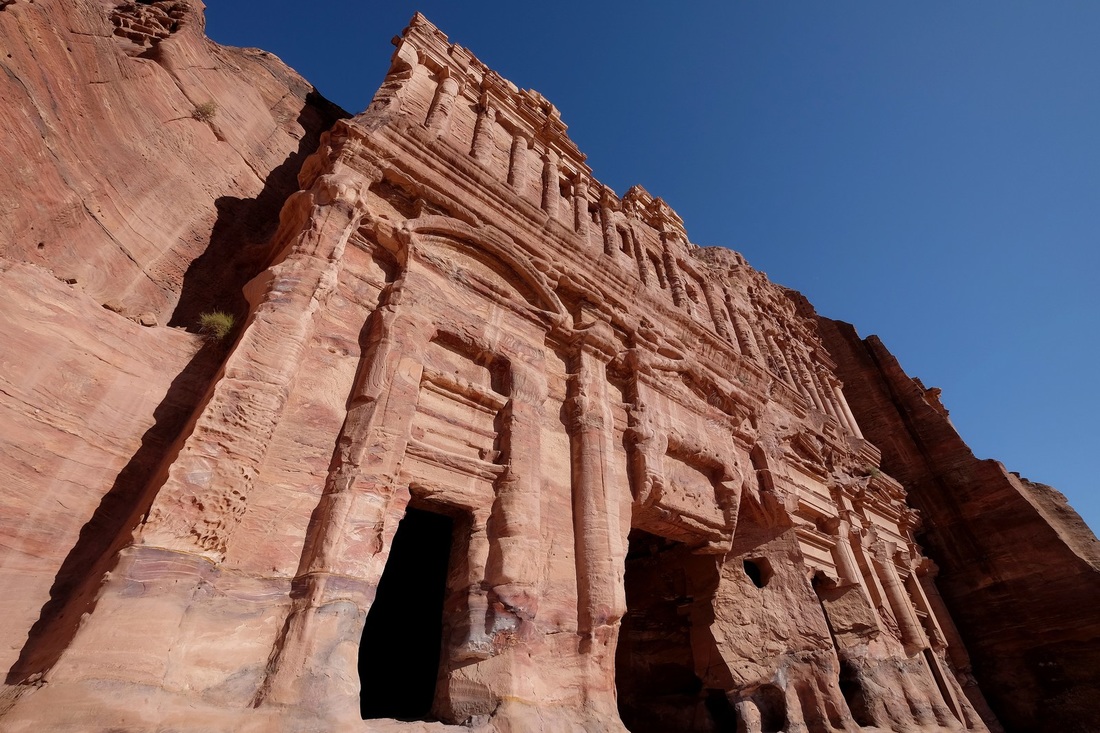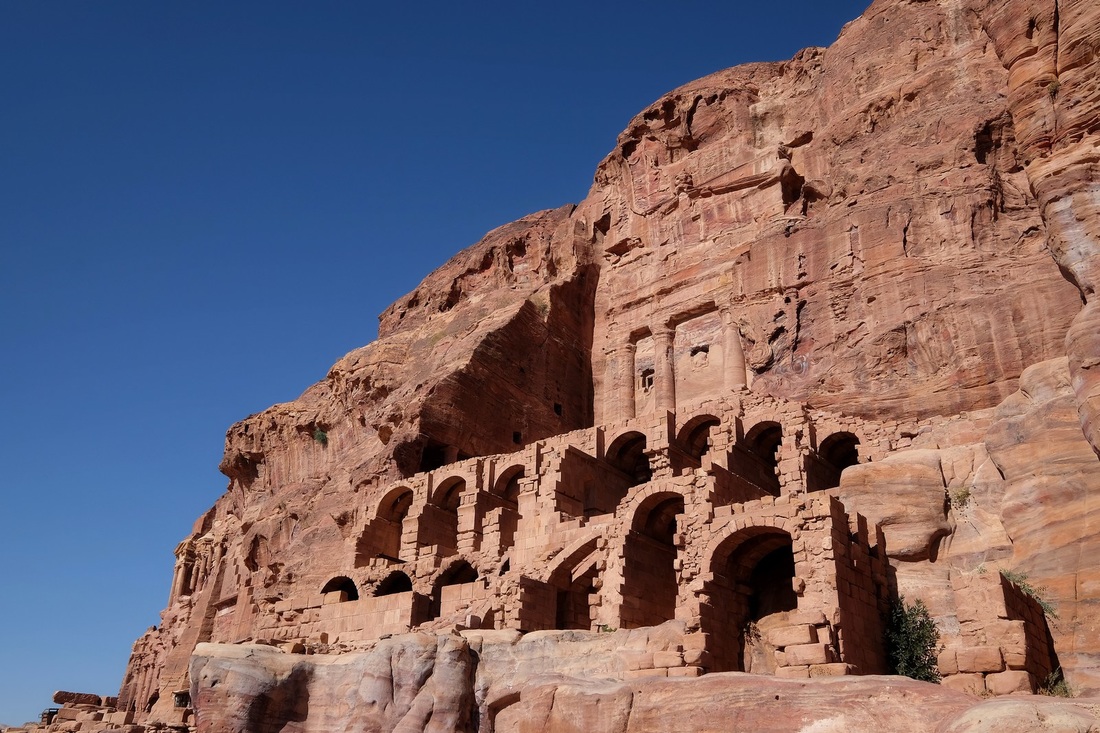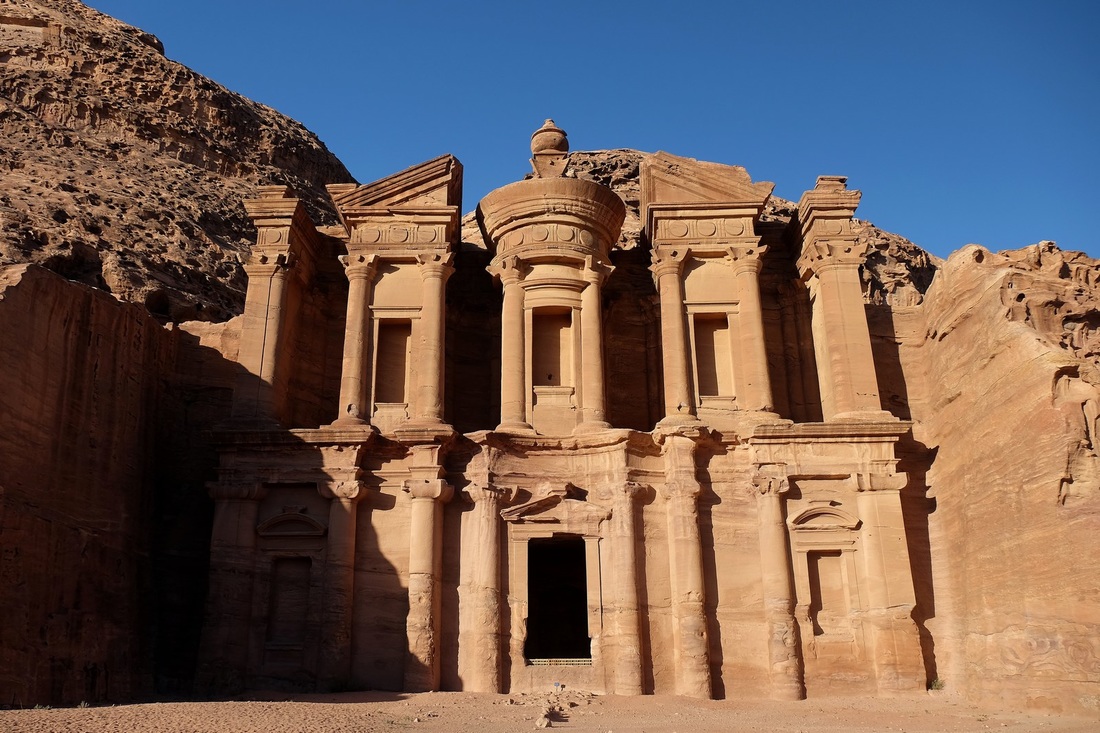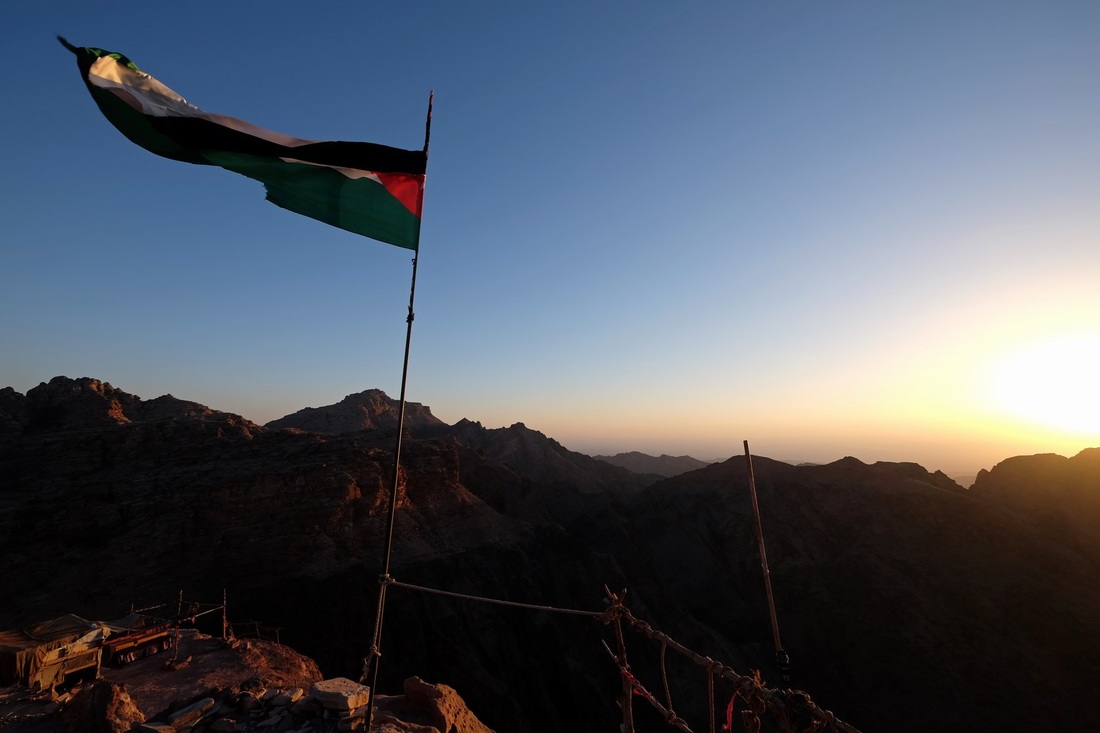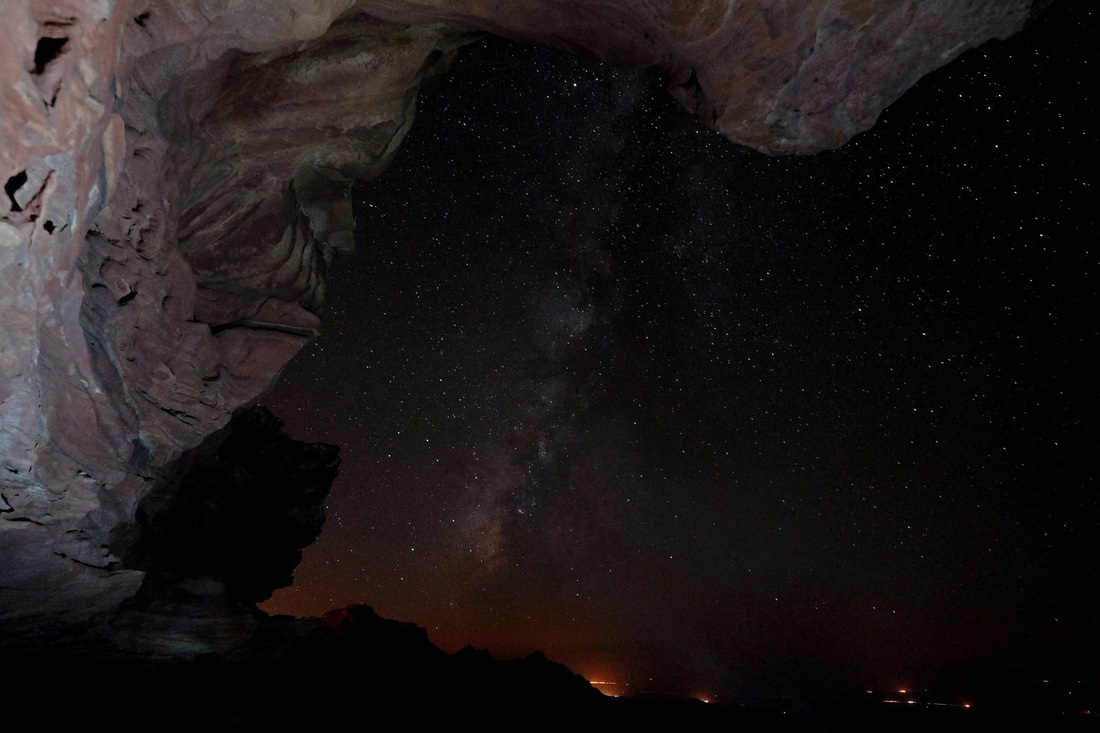This was one of the most eagerly anticipated destinations for me when I started my journey. And it didn't disappoint. Petra, also known as "The Rose City", is almost entirely chiseled from the red-pink sandstone of its surrounding cliffs. What's fascinating to me is how it sits, completely insulated, within an enclosed rocky basin. Encircled by mountains, it is only accessible through two narrow canyons, or "siqs". In fact, it is so well-hidden that it remained forgotten and lost for centuries, only rediscovered in 1812 by a Swiss explorer.
Petra was established by the Nabataeans, an ancient Arabian people, in 300BC. It served as their capital, and over several hundred years, it became a prominent trading city, where caravans carrying Chinese silks, Arabian incense and Indian spices would converge. Gradually, Hellenistic and Roman elements were incorporated into its architecture, blending with existing pre-Islamic Arabian foundations. A journey through Petra today is like a passage through history where influences of successive civilisations emanate from its rock-cut facades. Immortalised on this canvas of solid stone lie Nabataean infrastructure, Egyptian artistry, Greek temples, a Roman theater and even a Crusader fort. And it's wonderful how all these very different components come together so harmoniously, as if planned from the very onset.
Well worthy then, of its title as one of the New Seven Wonders of the World. In a poll run by the New7Wonders foundation which attracted 100 million votes, Petra was named, comfortably, as one of the seven. The others were the Great Wall of China, Chichen Itza (pyramid) in Mexico, the Colosseum of Rome, Machu Pichu in Peru, the Taj Mahal in Agra and the Christ the Redeemer statue in Rio de Janeiro.
It's possible to see almost all of Petra in one day, but this would involve walking something like 30km on undulating terrain with very little shade. So perhaps more realistic in winter. It's much more bearable to do it over two days, especially since the two-day ticket is 55 Dinar (USD78), just 5 Dinar more than a one-day ticket. The site is pretty massive, and the trails take you up several mountains for spectacular yet different views. For those who don't feel like walking, there are camels, horses and donkeys for hire, although bear in mind that you will be contributing to the piles of poo deposited everywhere by these animals.
I could write more about the monuments in Petra, but it's much easier to explain with the help of illustrations. Some photos from my walkabouts:
Bottom pic: The Urn Tomb with its magnificent tiered entrance.
No one is quite sure who these tombs belong to because there are no inscriptions inside them, or they have been worn away over time. Hence the slightly ambiguous-sounding names.
You can see the Hellenistic (Greek) elements in the ornate carvings on the column in the bottom pic.
The Colonnade Street below the temple was the "main drag", a high street of sorts where arcades of shops hosted Petraen traders and shoppers.
Unfortunately I didn't bring a cable release on this trip, so astrophotography is somewhat limited. 30 secs at ISO2,500. 10mins at ISO200 would be better, but you'd get star trails. A rig, like a equatorial mount or an autoguider, to compensate for the Earth's rotation would be much better. For this, more time and money are required.
